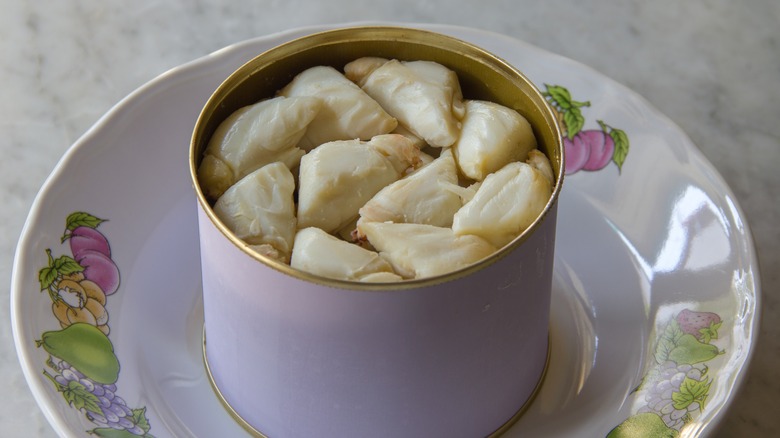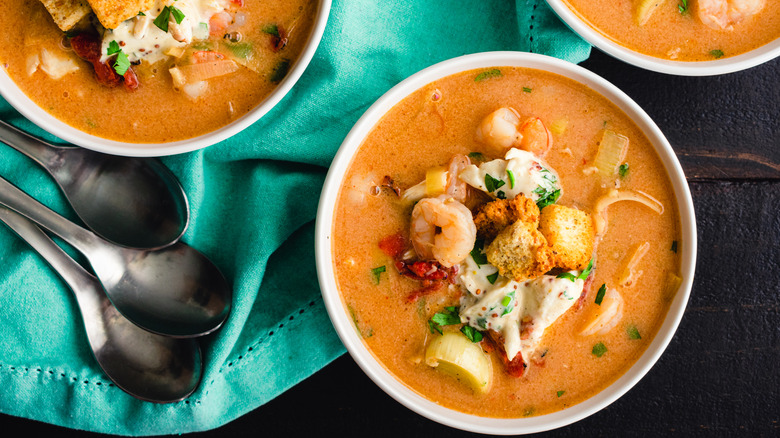The Correct Way To Store Leftover Canned Crab Meat
Regardless of your proximity to the ocean, canned crab is a tinned speciality that allows you to enjoy the sweetly briny crustacean whenever you please. Beyond its accessibility, canned crab is also budget-friendly and easy to eat. Plus, it lasts way longer than freshly caught crab. Though it's worth stocking up on, if you manage to open up too many different cans and are suddenly laden with leftovers, knowing how to store uneaten crab is essential.
Once canned crab has been opened, anything left behind must be removed from the tin. Like other canned goods, this step can reduce the risk of leaching chemicals and, more importantly, help preserve quality. In fact, transferring crab to a different container is one of the most effective ways to keep the meat tasting and smelling its best. Not to mention that the right vessel — ideally, an airtight container — can even limit cross-contamination once stored. While we're partial to non-porous glass options, plastic containers or bags work well also.
When it comes to packing leftover crab with its brine, the choice is yours. Just be mindful that discarding the liquid makes leftovers approachable as the meat will be prepped and ready-to-use. In any case, after crab is moved into a container and labeled with the date, it can be placed in the fridge. Keeping crab cold will slow spoilage and prolong freshness, which is why it's key to store leftovers on the bottom shelf towards the back of the fridge where it's the chilliest.
Despite your best efforts, leftover crab won't last for long
Uneaten canned crab (or really any tinned seafood) should be consumed quickly given its perishable nature. Although leftovers will keep for about two days, we advise digging into crab as soon as possible. To ensure that leftovers are enjoyed in next to no time at all, consider working extra meat into hard-to-resist goodies like crispy crab cakes, savory summer rolls, or cheesy crab ravioli.
Struggling to finish canned crab within the recommended time frame? Try freezing your leftovers. While this storage method can impact quality, freezing will extend crab's shelf life by months. All you need to do is add excess crab into an airtight container before nestling it deep in the freezer. When you're finally ready to use the crab, let the meat thaw overnight in the fridge. Use it immediately in cooked preparations like a seafood chowder or creamy crab rangoon dip for the tastiest results.
No matter how canned crab is stored, eventually, it will go bad. Visual changes like discoloration or mold spores are clues that crab is no longer safe to eat, much like slimy textures or foul-smelling aromas. Should you notice any of these signs of spoilage, compost the rotten crab meat. Then, simply crack open a new can of crab to enjoy.

